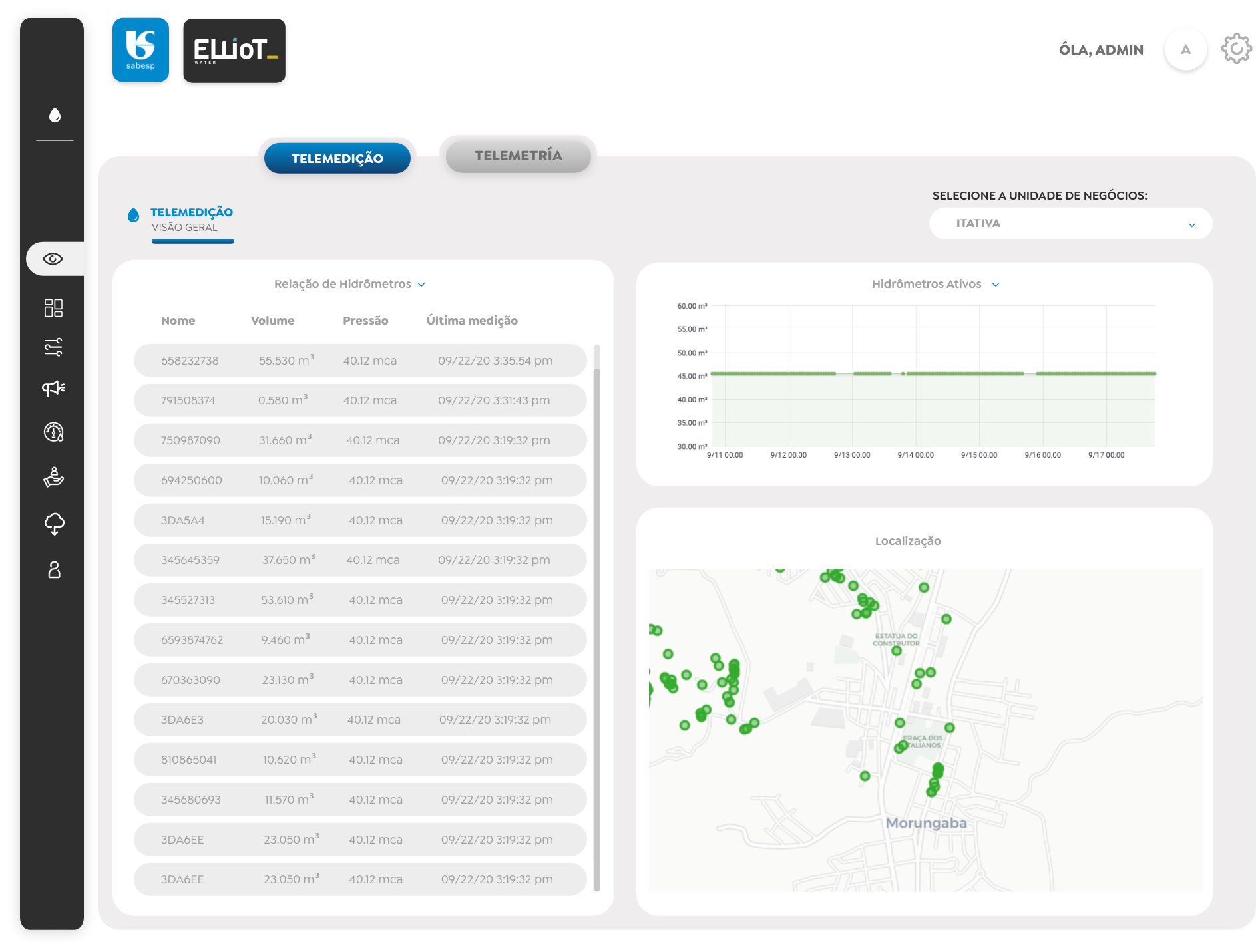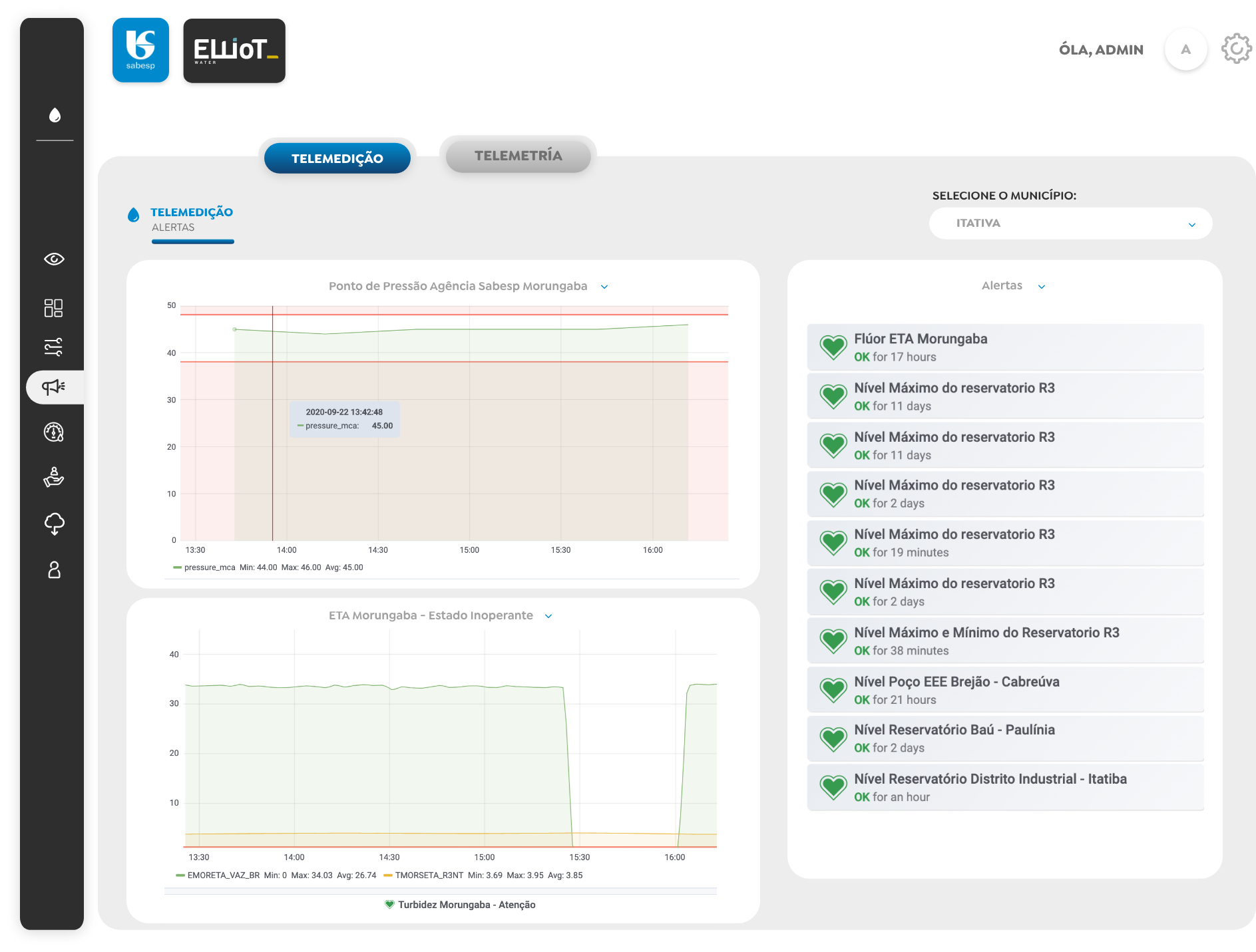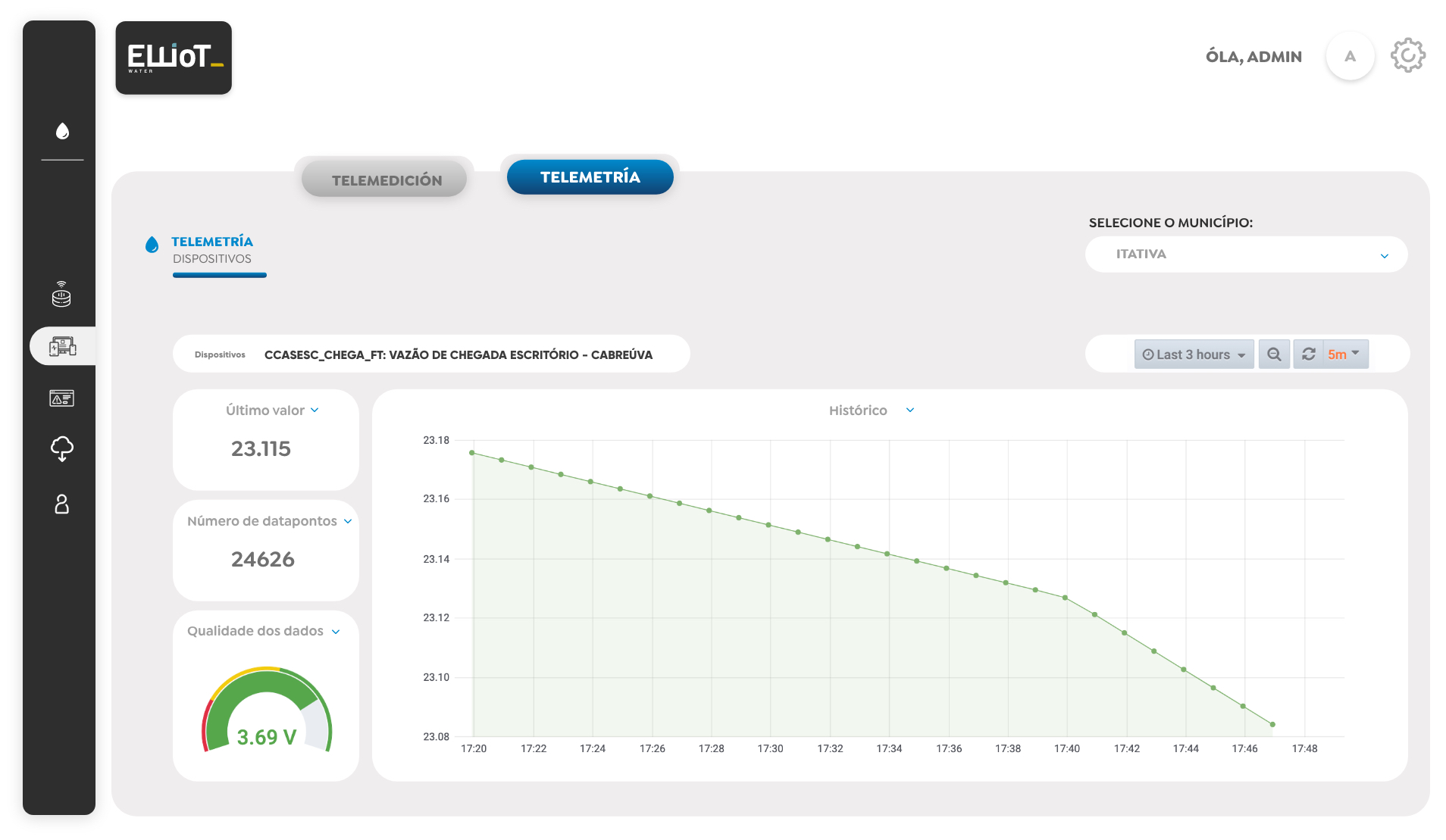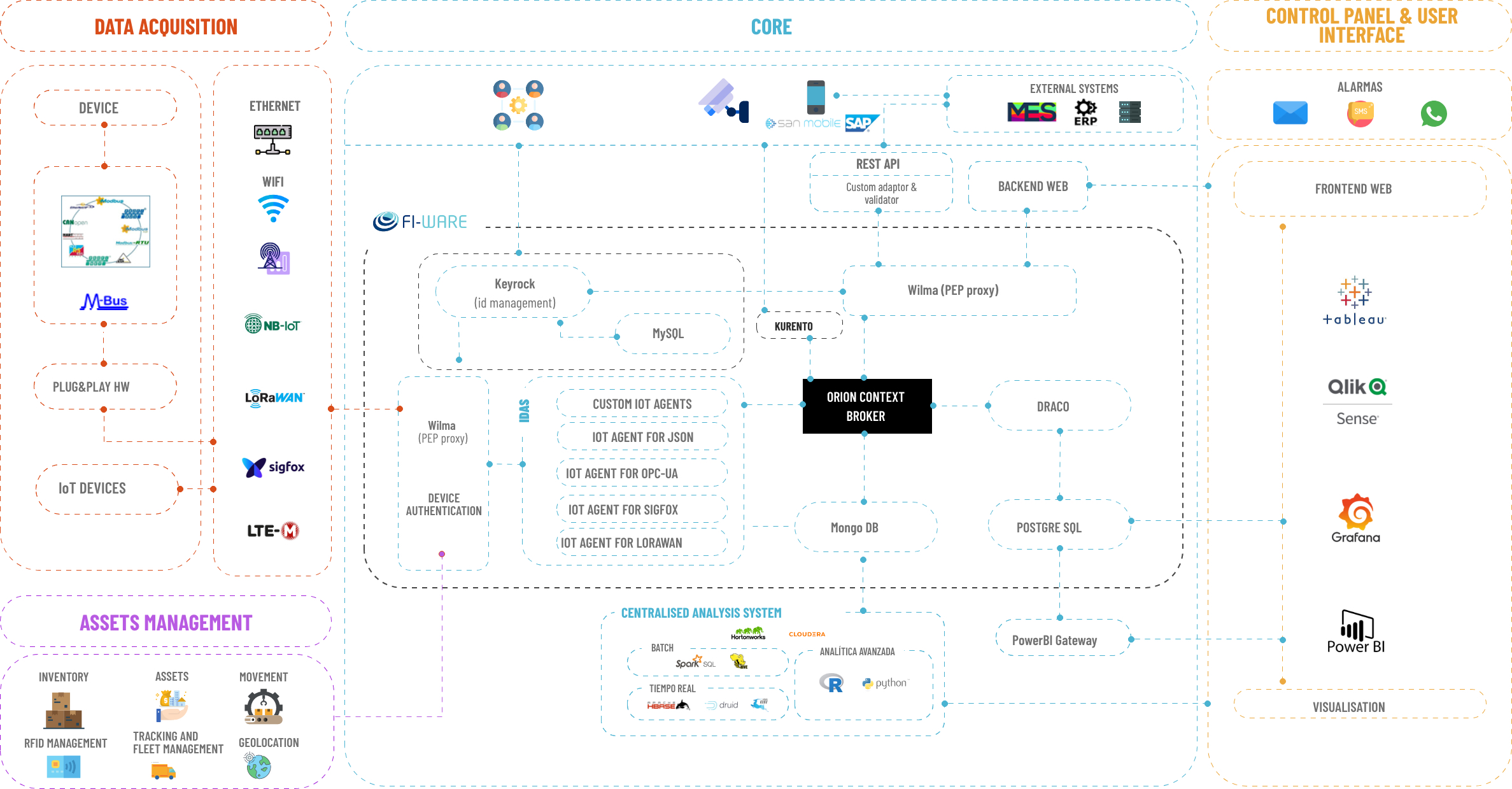Challenge & Context
Water is a scarce resource. It is well known that water management is a priority for our societies, not least in dense-populated areas of the world where access to water may be even more difficult. Today, 55% of the world’s population lives in urban areas, a proportion that is expected to increase to 68% by 2050, adding another 2.5 billion people to urban areas with close to 90% of the increase taking place in Asia and Africa. While water consumption is continuously growing, up to 35% of water is lost due to inefficiencies of distribution networks and overall, more than 1 billion people suffer from water cuts.
Taking a deeper look into Brazil, Sabesp a mixed capital corporation founded in 1973, is considered one of the largest sanitation companies in the world in terms of population served and addresses approximately 30% of the investment in basic sanitation made in Brazil. It is currently responsible for water supply, collection and sewage treatment in 375 municipalities in the State of São Paulo.
According to Springer, water resource management revolves around planning, developing, distributing and managing the use of water resources in an effective and optimized manner. That is where Sabesp has its extensive experience: water resource management based on a wide portfolio of projects for national and international organisations.
For the 2020-2024 period, it plans to invest approximately R$20.2 billion, with a focus on expanding water availability and security. Their network in the metropolitan area of São Paulo consists of 6.3 million water connections, 34 water treatment plants, 387 reservoirs – storing 2.3b litres of water – and a distribution network of 40.300 kms.
Within this context, Sabesp had to be wise in selecting an ICT solution that is able to manage their telemetry and telemonitoring system based on real-time data. It is their goal to combine the latest trends in IoT in order to make the best management of water resources a reality.
When a public tender was launched in December 2019, Sabesp responded with different offerings focused on the selection of a system to help them integrate IoT solutions and software solutions for a higher efficiency in water management, specifically for systems within the business unit of Capiravi/Jundiaí in Brazil. This is where Elliot Cloud entered the scene.
Solution
The benefit of Elliot Cloud is its ability to connect and manage all sorts of IoT devices, allowing the fast deployment of secure and scalable systems.
The solution covers the entire chain of an IoT solution: from data gathering, devices management and secure data storage, to the efficient visualisation of data, and further integration with existing systems.
Elliot Cloud allows the deployment of devices through an easy-to-use end-user interface. Users are at the center of Elliot Cloud’s attention: they can manage devices in a drag-and-drop fashion and have full transparency of e.g. issues such as storage of data and scalability.
Elliot Cloud facilitates the creation of simple visualisations and dashboards to monitor the data coming from the deployed devices, while also configuring the data flow and data transformations that are needed for the desired dashboard.
Figure 1 . Dashboard and Mapping
To that end, Elliot Cloud is Sabesp’s chosen solution to handle different issues currently faced by the company. The solution is based on the implementation and support of automation solutions, telemetry and data analytics. It helps Sabesp in two different aspects by:
- Providing a monitoring system, event management and automation data behaviour analysis for the operative processes of the business unit in the region of Capivari / Jundiaí (13 municipalities);
- Providing a real-time consumption measurement system in the water network for the municipality of Morungaba.
The main characteristics of Elliot Cloud include
- an Open Source solution allowing the integration with a wider variety of technologies and devices. This means that there are no vendor lock-in scenarios;
- a modular framework comprised by self-contained software pieces, hereby providing maximum flexibility and scalability;
- connectivity with any IoT device, ERP systems, data sources, etc.;
- the management of every single device connected to the platform;
- a safe storage of the data retrieved from these devices;
- a real-time monitoring of all devices deployed;
- an easy to use, drag-and-drop feature which allows visualizations to be easily understood.
Figure 2 . Dashboard and Analysis
In particular, “Elliot Water” is a system that uses IoT technology for data gathering, aiming at reducing data error and cost. It uses telemetry solutions and advanced analytical technologies such as Big Data, Artificial Intelligence and Status Estimation Techniques, allowing an intelligent management of supply networks.
Elliot Water is a robust and powerful tool for the management, control and monitoring of water supply and purification networks, hereby turning traditional hydraulic networks into intelligent hydraulic networks.
Figure 3 . Dashboard, Analysis and outcomes
How it works
Elliot Water is the operating system of IoT built as a secure and tailored industrial solution. It covers the physical and / or digital connectivity of flow meters, pressure, sensors, treatment and purification plants as well as the collection of all data and its analysis.
Elliot Water offers the following main features:
- Real-time monitoring of the water network components (meters, pressure sensors, etc.);
- Global analysis: overall treatment plants are monitored and controlled through the same software;
- event and Data Logging: Customizable chronological record of all events and alarms set;
- alarms and events management:business rules creation and customized alarms and/or notifications;
- data Analysis: Customized creation of dashboards for data graphics visualization advanced data analysis through Big Data and Artificial Intelligence;
- remote Control: Execution of control orders;
- transparency: Open software providing total transparency in data transmission and analysis;
- leakage Prediction: Via the use of Status Estimation Techniques and accurate data collection, an algorithm is generated to predict network leaks;
- treatment and Purification of plants: The solution provides the evolution of the current Scada without losing the investment made. It allows the collection, interpretation, normalization and delivery of data from any server or SCADA controller, allowing the expansion of new devices. All plants and water networks are integrated into a single software for monitoring, control and analysis;
- integration and Interaction with SCADA: and with a variety of systems such as the Geographic Information System (GIS), hydraulic modelling systems and asset control systems, for instance.
The functional architecture of Elliot water allows fairly fast, cost-effective deployments with great ability for scaling.
Figure 4 . Architecture
The above image demonstrates the solution’s core elements based on FIWARE technology. The hard part of the solution is the Orion Context Broker providing contextual information and data brokerage services for the remaining components.
Elliot Water uses standardised data models and components to connect devices like IoT Agents. The solution also also uses KeyRock FIWARE Generic Enabler for Identity Management, plus Wilma as a PEP proxy.
Benefits & Impact
Elliot Cloud can be used in diverse domains such as
- Industry: Evolution of traditional SCADA. The much needed connection between the physical OT (operational technology) world and the digital IT world. In this context, Elliot Cloud monitors, controls and analyses different machines, lines or production plants to improve productivity and reduce costs;
- Solar: Monitoring, control and management of photovoltaic solar installations;
- Water: Technological solution based on IOT systems to convert traditional water supply networks into far better intelligent networks;
- Buildings: Effective management and control of buildings. Evolution of traditional Building Management System. High connectivity with existing sensors and devices installed in buildings as well as advanced analytics using technologies such as Big Data.
Whilst this FIWARE Impact Story is mainly focused on the use case of Sabesp, Elliot Cloud is also being used in many other fields:
Paying customers:
- Automotive industry with CEFA, EMKA and MRA;
- Water management with Sabesp;
- Solar with Solaring.
Research and innovation activities:
- Horizon 2020 projects within Industry 4.0 (L4MS and DIH2 cascade funding experiments);
- Horizon 2020 Auroral in the Agri sector (starting January 2020);
- Regional grants in Spain for product development and the development of new elements like IoT Agents.
Added value through FIWARE
Bosonit has been working with FIWARE technologies since its foundation. After having been selected for the European Commission’s Select For Cities programme, Bosonit has been working with FIWARE technologies across a number of projects.
Advantages of using FIWARE:
- It is Open Source: while it may sound obvious, avoiding vendor lock-in is a powerful element when selling services and solutions;
- Driven by implementation: all software components are ready for implementation and can be deployed in a fast and reliable manner by different solution providers;
- The FIWARE Community: significant and constant growth also on a global basis. Furthermore, there is an excellent level of documentation and support that help Bosonit and its spin-off to move forward;
Access to research and innovation: allowing direct to new trends while being supported by the European Commission on a project basis is a strategic way to lower risks when /implementing advanced solution features.
Next Steps
The next lighthouse step is the launch of a full version of Elliot Cloud as a PaaS (Platform as a Service). The sales strategy includes a low-code IoT platform, aimed to be sold as a subscription model to allow the solution to scale.
In order to achieve this goal, the teams are currently working on two main development activities: (1) building the platform in the cloud, so that the deployment of multiple instances is handled automatically and (2) building the solution’s own big data distribution, so that it can provide additional analytics capabilities with regards to the data collected by Elliot Cloud.
References
- La firma navarra Elliot Cloud, principal startup española por volumen de negocio en el sector IoT
- FIWARE Marketplace





